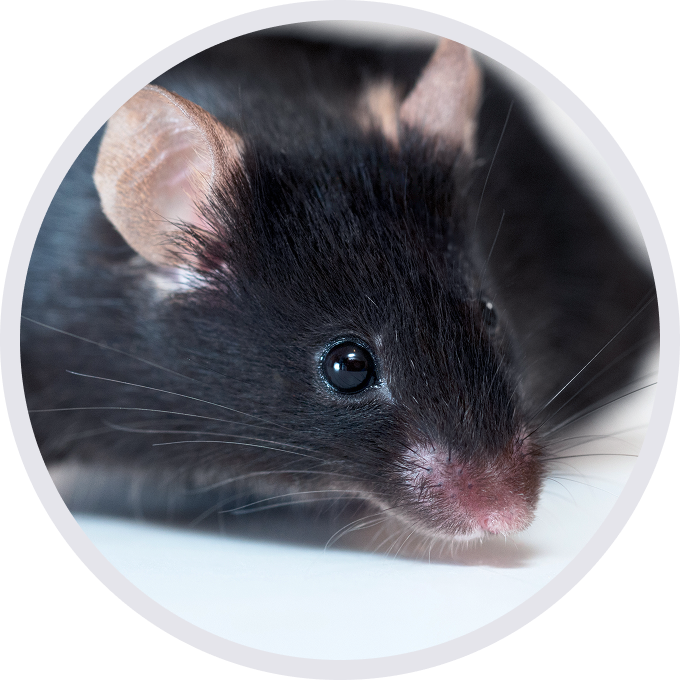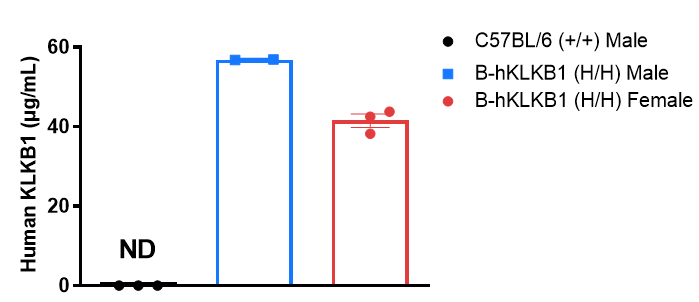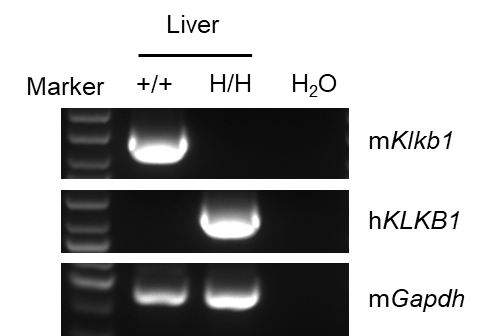
C57BL/6-Klkb1tm1(KLKB1)Bcgen/Bcgen • 112867
Gene targeting strategy for B-hKLKB1 mice. The exons 2-15 of mouse Klkb1 gene that encode the whole molecule (ATG to STOP codon), including 3’UTR were replaced by human counterparts in B-hKLKB1 mice. The promoter and 5’UTR region of the mouse gene were retained. The human KLKB1 expression was driven by endogenous mouse Klkb1 promoter, while mouse Klkb1 gene transcription and translation was disrupted.

Strain specific KLKB1 expression analysis in wild-type C57BL/6JNifdc mice and homozygous humanized B-hKLKB1 mice by ELISA. Plasma was collected from wild-type C57BL/6JNifdc mice (+/+) (male, n=3, 6-week-old) and homozygous B-hKLKB1 mice (H/H) (male, n=2, 6-week-old; female, n=3, 6-week-old). Expression level of human KLKB1 was analyzed by ELISA (Human Prekallikrein 1B ELISA Kit, Abcam, ab202405). Human KLKB1 was exclusively detectable in homozygous B-hKLKB1 mice (male, n=2, 6-week-old; female, n=3, 6-week-old). Values are expressed as mean ± SEM.

Strain specific analysis of KLKB1 mRNA expression in wild-type C57BL/6JNifdc mice and B-hKLKB1 mice by RT-PCR. Liver RNA were isolated from wild-type C57BL/6JNifdc mice (+/+) and homozygous B-hKLKB1 mice (H/H), then cDNA libraries were synthesized by reverse transcription, followed by PCR with mouse and human KLKB1 primers. Mouse Klkb1 mRNA was only detectable in wild-type mice. Human KLKB1 mRNA was detectable only in homozygous B-hKLKB1 mice but not in wild-type mice.

The inhibitory efficiency of the nucleic acid drugs against human KLKB1 in heterozygous B-hKLKB1 mice. Heterozygous B-hKLKB1 mice were randomly divided into two groups (G1: n=3, 8-week-old, female; G2: n=3, 8-week-old, female). The human KLKB1 targeted nucleic acid drug and saline were administered to the mice individually. The mice were sacrificed on day 35. (A) The schematic diagram of experimental processing. (B) The changes in KLKB1 protein expression levels in serum on day 7, day 14, day 28 and day 35 after administration, compared to the levels before administration. The human KLKB1 in the treatment group (G2) was significantly reduced compared to the control group after administration. Values are expressed as mean ± SEM.